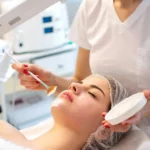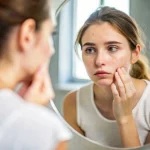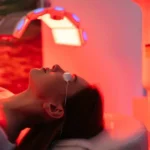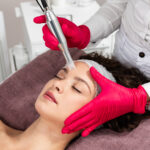
Introduction
Are you considering a face-peeling treatment? How long does it take and what to expect during the process? Look no further! In this comprehensive guide, we will delve into the world of facial peels, discussing the duration of the treatment, the different types available, and their benefits. Whether you’re interested in rejuvenating your skin or addressing specific concerns like aging skin or acne scars, we’ve got you covered. Let’s start by understanding the basics of facial peels.
Understanding Facial Peels
What Are Facial Peels?
Facial peels, also known as chemical peels, are cosmetic treatments that involve the application of a chemical solution to the face. These solutions help remove damaged outer layers of skin, revealing smoother, younger-looking skin beneath. Facial peels can address various skin concerns, including fine lines, wrinkles, acne scars, hyperpigmentation, and more.
Types of Facial Peels
Different facial peels, ranging from mild to deep, are each designed to target specific skin issues. The three primary types are:
- Superficial Peels: These are the mildest peels to address minor skin concerns like uneven skin tone and texture. They require little downtime.
- Medium Peels: Medium peels penetrate deeper into the skin and effectively treat moderate skin issues, such as fine lines and acne scars. Recovery time is longer compared to superficial peels.
- Deep Peels: Deep peels provide the most dramatic results and are used to treat severe skin concerns. They require substantial downtime, but the results can be transformative.
Benefits of Facial Peels
Facial peels offer a range of benefits, including:
- Smoother and more even skin texture
- Reduced appearance of fine lines and wrinkles
- Improved acne scars and blemishes
- Enhanced skin radiance and brightness
- Increased collagen production for firmer skin
The Duration of Face Peeling Treatment
Pre-Treatment Preparation
Before undergoing a facial peel, it’s essential to prepare your skin. Your skincare specialist will provide specific instructions, but generally, you may need to discontinue certain skincare products containing retinoids or alpha hydroxy acids for a few days to a week before the treatment. This helps reduce the risk of skin irritation during the procedure.
The Treatment Process
The actual duration of a facial peel treatment can vary depending on the type of peel you choose. Here’s an overview:
- Superficial Peels: These treatments typically take around 30 minutes to complete. You can schedule them during a lunch break or as a quick beauty boost.
- Medium Peels: Medium peels usually last about 45 minutes to an hour. These may involve multiple layers of the chemical solution and can cause discomfort during the procedure.
- Deep Peels: Deep peels can take up to two hours or more, requiring thorough application and monitoring. You may need a local anesthetic or sedative to manage discomfort during a deep peel.
Your skincare specialist will assess your skin’s condition and recommend the appropriate type of peel and duration based on your goals and concerns.
Post-Treatment Care
After a facial peel, following a specific skincare regimen is crucial to ensure proper healing and maximize results. This typically includes:
- Applying a recommended post-peel moisturizer.
- Avoiding sun exposure and using SPF to protect your skin.
- Staying hydrated and maintaining a healthy skincare routine.
Your skincare specialist will provide detailed post-treatment instructions to help you achieve the best possible outcome.
Choosing the Best Facial Peels for Aging Skin
Factors to Consider
When addressing aging skin, choosing the right facial peel is essential. Consider the following factors:
- Skin Type: Your skin type and sensitivity play a significant role in selecting the appropriate peel.
- Severity of Aging: Assess the extent of fine lines, wrinkles, and other signs of aging to determine the level of peel needed.
- Downtime: Consider your schedule and availability for downtime during the recovery phase.
Popular Facial Peels for Aging Skin
Some of the best facial peels for aging skin include:
- Glycolic Acid Peels: These superficial peels treat fine lines and promote collagen production.
- TCA Peels (Trichloroacetic Acid): Medium-depth TCA peels can address moderate wrinkles, age spots, and uneven skin tone.
- Phenol Peels: Deep phenol peels provide dramatic results for severe signs of aging but require the most downtime.
Consult a skin care specialist to determine which peel best suits your specific aging skin concerns.
The Orange Peel Skin Phenomenon
What Is Orange Peel Skin?
Orange peel skin refers to a textured skin surface resembling an orange peel’s dimpled appearance. This condition can result from various factors, including genetics, cellulite, and loss of skin elasticity.
How to Address Orange Peel Skin
Addressing orange peel skin may require a combination of treatments, including:
- Skin-tightening procedures
- Topical treatments
- Proper skincare routine
- Healthy lifestyle changes
It’s important to consult with a dermatologist or skincare specialist for a personalized treatment plan.
Preventing Orange Peel Skin
Preventing orange peel skin involves maintaining good skincare practices, including:
- Staying hydrated
- Using sunscreen daily
- Incorporating regular exfoliation into your routine
- Eating a balanced diet
Conclusion
Face peeling treatments can be a highly effective way to rejuvenate your skin and address various concerns, including aging skin and orange peel texture. The duration of the treatment varies based on the type of peel you choose, and it’s essential to follow pre and post-treatment care guidelines for optimal results. If you specifically target aging skin, consult a skin care professional to determine the best peel for your needs. Maintaining healthy skincare habits is key to preventing and addressing issues like orange peel skin. At Beauty At First Sight Med Spa, we are committed to helping you achieve radiant, youthful skin through the right treatments and expert guidance.






